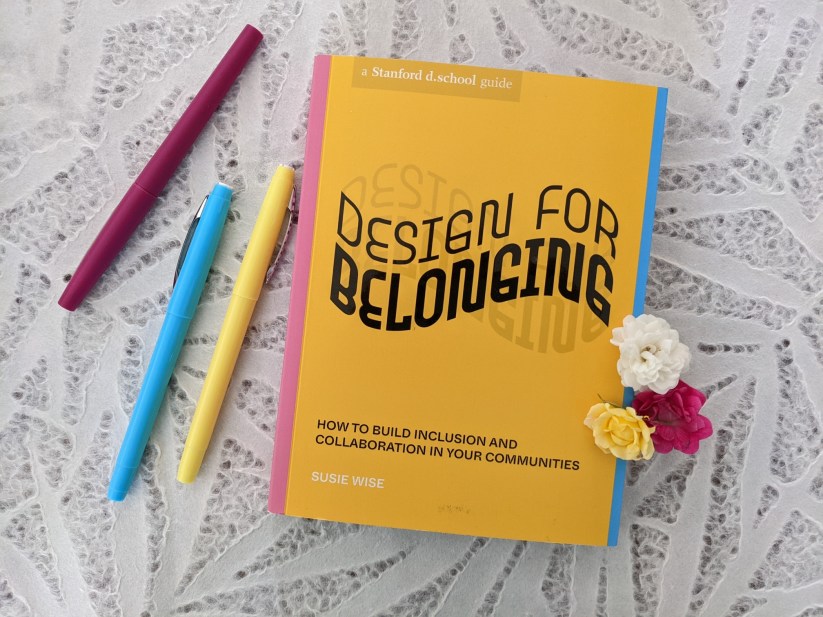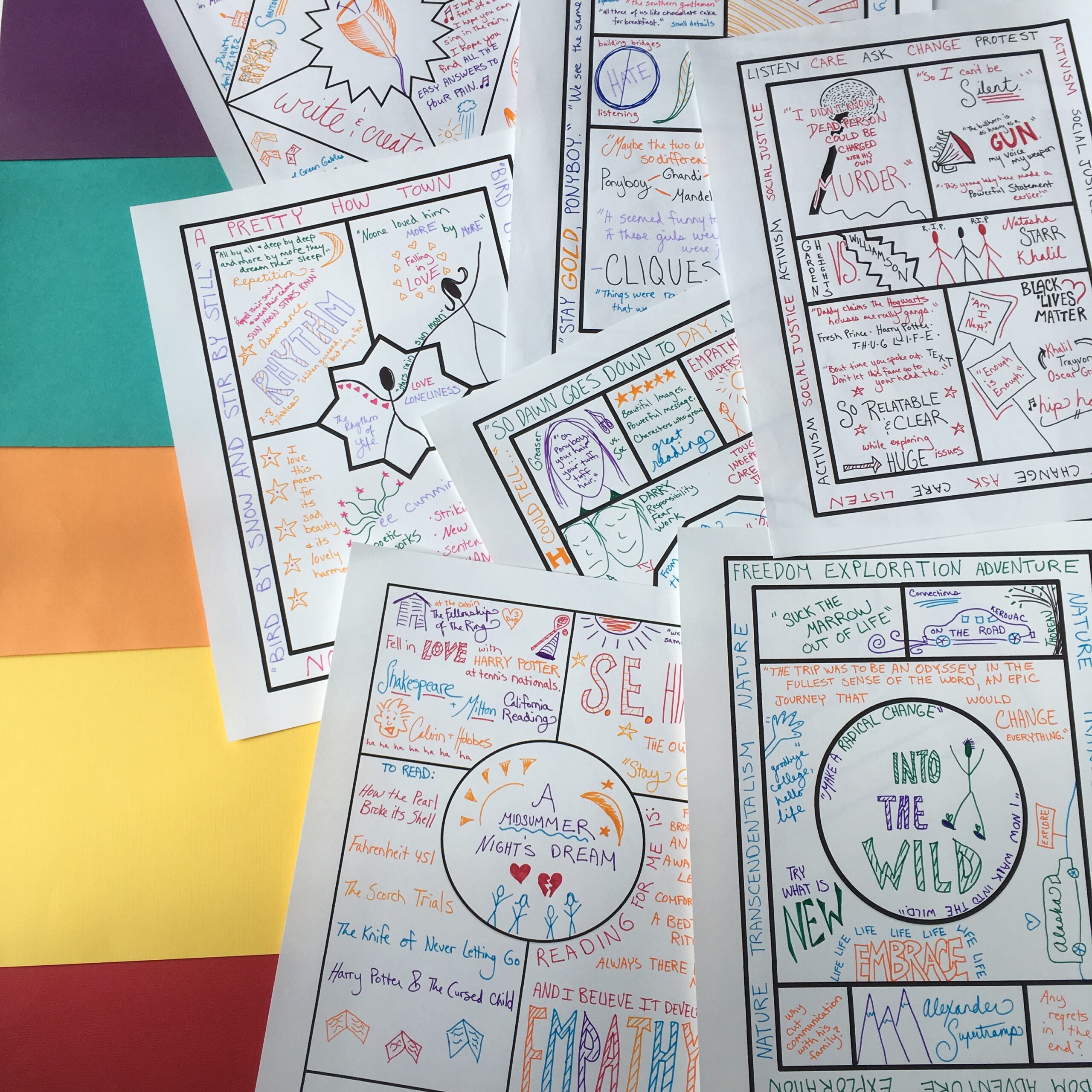
I’m so excited for you to meet Dr. Susie Wise and join us today for a conversation about how to design the back-to-school experience for teachers (first and foremost) and students (also vital) this fall.
Teachers – as you very well know – have had so much to process over these last few years. So much that the word “process” seems ludicrously inadequate. Today we’re diving into how we might approach back-to-school faculty meetings and relationships with this front of mind, rather than the usual bulleted list of to-dos and to-says.
I think you’ll find this episode rich both in directly actionable ideas but also in fresh perspective. I really enjoyed my conversation with Susie, and I hope you will too.
You can listen in below, click here to tune in on any podcast player, or read on for the full post.
We’ll be talking about it throughout the episode, so let’s just start with a quick glance at Susie’s lovely book. It’s a quick, inexpensive, inspiring read.

But let’s begin at the beginning.
Designing a Gentle Return for Teachers
Over the last few years, teachers have been through school shootings, pandemic, distance learning, and layers of inequity and trauma exposed. They’ve been managing crisis on top of crisis, both for themselves and their students.
Of course, this summer of rest is important. It helps a little.
But how can we hold space for teachers returning after all of this? How can we welcome them back and meet them where they are?
One possibility is to design the return for many different modalities.
What if faculty meetings had options like these…
- Space to write and reflect on your summer and healing, and about what you still need to recover and move forward
- Space to share what you’re nervous about
- A place to design what you need for your new classroom
- Space to share what you need in order to show up and feel like your best self
- Time outside in community
- Ways to share food and stories
- Space to dance or draw
- Visiting therapists you could talk to about what you’ve been through
Susie suggests the return to this school year “should feel like a very gentle smorgasboard of loving activities people can engage in.”
Doesn’t that sound fabulous? What if we gave teachers choice and activity and joy in the return to school, rather than a bulleted list of announcements and initiatives?
Fall can be a chance to help teachers join again in a collective experience of leading in education, a reminder of why we bother to teach in community, a chance to nurture and support the relationships between the adults who are so often isolated in their classrooms once students return (and even before).
Designing Fall Faculty Meetings
Changing the pattern of fall faculty meetings could really help teachers start the year feeling more connected and more valued, with more sense of belonging. But it isn’t always easy.
Bringing an outside person in to lead into a new space can be helpful. So can setting up the entrance to the meeting in a new way – something as simple as flowers by the door, music playing, even inviting people to dance or move in a special way on their way in. It might help to create roles within the faculty and let people who would really love to help experiment with things like the ambiance, the food, the lighting, etc.
It’s not about spending a ton of money, it’s about caring and attending to the needs of the community. As Susie said, “Show with intention that we’re paying attention.”

Creating Belonging IS the work
When people came back from pandemic, there was such a speedy get-back-to-normal impetus, and very little time to deal with the collective trauma. This back-to-school season needs to acknowledge what has happened, what people have been through – going straight to the bullet points is NOT going to feel good to anyone. It’s time to do a real reset and acknowledge what has happened.
We know from research that we need this feeling of belonging. Many groups end up with slogans that focus on it, like “go slow to go fast” and “working at the speed of trust.” Shortcutting this type of work doesn’t serve the needs of the organization in the end, because you can’t retain people and help them do good work by ignoring their needs.
Flipped Learning for Faculty
One way to think about this change is to see it as flipped learning for faculty. Using the levers of design (explained beautifully in Susie’s book), school communities can experiment with sending out the old basic meeting bullet points by email, and then using faculty meetings to focus on relational work. The bonus here is that everyone will see that version of flipped learning and have more of a sense of how it might work in the classroom too.
Helping Create Change even if you aren’t Admin
Maybe you’re thinking that these changes sound nice, but you’re not admin, so you can’t really help enact them.
Well, one option would be to suggest Design for Belonging to your leadership team (it’s a quick and inspiring read), or to send them this podcast episode with a note.
But small and scrappy experiments are a key focus in design thinking, and they could help you create change too. Talk with other interested faculty (or brainstorm on your own) and come up with just a few ideas – prototypes – to suggest for a meeting.
You might say: “I was wondering if we could start with a check-in question, have a walk and talk in the middle for people to share an idea, or a new kind of meaningful closing ritual.” That way, even without access to all the design levers a school leader running the meeting has, you can provide possibilities for a new and significant change.

Designing the Back-to-School Process for Students
Another way to help create change in the faculty arena is to try what you want to see with your students, and then share your stories and wins with the faculty.
As you consider how to bring students back in, making space for them to share what they’re feeling right now can be really helpful. Tools like an emotional journey map or a highest hopes/biggest worries share can help you see how they’re doing.
Another effective design tool Susie suggests is to ask them to consider what the classroom would be like if it was a person. This gives them just a little distance as they envision what the year is feeling like and what they want from it.
What does she (the classroom) look like? Who are her friends? Who are her enemies? Hopes? Dreams?”
Then you can notice the trends of what students are saying and consider them as you work to create community and belonging moving forward.

And you can also engage the class on collective design work, asking them how can the community can follow through with the hopes they’ve come up with.
Creating the Classroom Container
As you set up the classroom, consider how you might let students see themselves belonging in the space. You might have places where they’ll be adding names or photographs, hopes or dreams, summer stories or something else. Creating collaboration in the space can help create belonging for the students who come into it.
You might also enjoy considering ways to bring students outdoors, bring the outdoors in, or create connections between your classroom and your neighborhood or your city. All of these options can also help you design for belonging.
Finally, you might think about how family stories and caregivers show up in your classroom or school at large. How might parents, grandparents, and other caregivers play a role in your classroom or school?
A parent might be able to invite a class to the workplace, help orchestrate a community project, or help students understand what civic participation looks like. This could be a great challenge to consider in a faculty meeting, student council meeting, PTA meeting, etc. – how can the school create more cross-generational experiences?
The Book: Design for Belonging

The book is organized into three sections – feeling, seeing, and shaping belonging. It’s a quick and impactful read, with beautiful art by mural artist Rose Jaffe, inspiring portraits of people engaged in helping create belonging (Susie calls them the “host heros”), and design tools you can use immediately.
It’s a short, colorful book that you can read and be inspired by in a few hours, rather than a research tome.
Connect with Dr. Susie Wise

Dr. Susie Wise is a design leader with experience in the education, tech, and the social sectors. She coaches leaders in equity design and innovation practices. She teaches at the d.school at Stanford and coaches with the Mira Fellowship. Previously she founded and directed the K12 Lab at the d.school and co-created Liberatory Design.
Explore the book, Design for Belonging, and grab the free toolkit


























